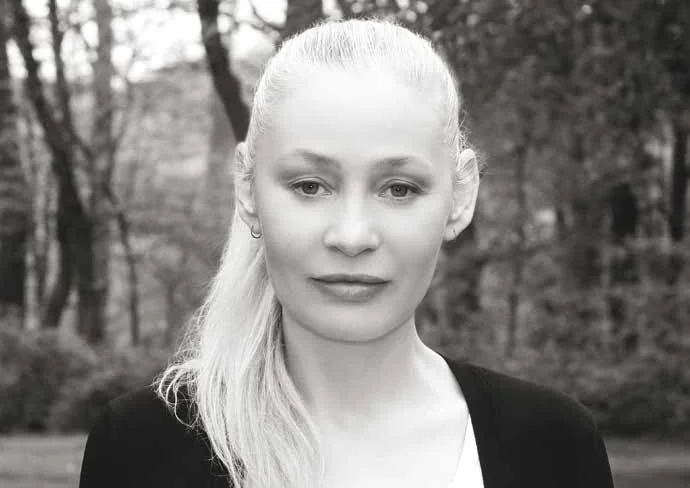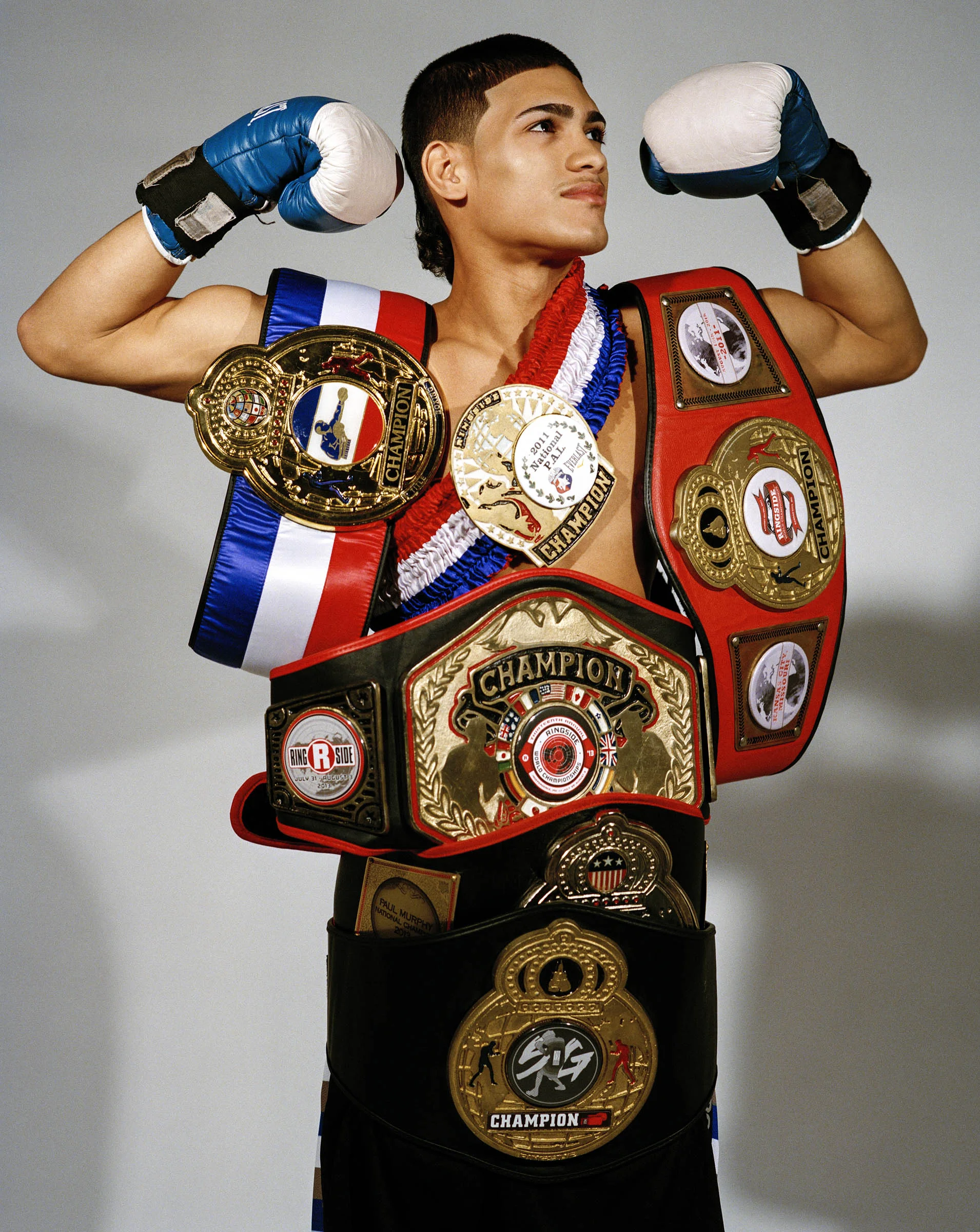Melanie Ward
Grunge, minimalism, heroin-chic: terms that summarize the ‘90s and the enduring legacy of the decade’s fashion highs, and simultaneously: all movements pioneered by British stylist Melanie Ward. Working alongside such visionaries as Corinne Day, Nick Knight, and David Sims, the modernist incited revolution, celebrating grittiness and a youthful devil-may-care attitude as the unsung alternative to an age of excess, when glamour, shoulder pads, and supermodels reigned supreme. Championing anti-fashion, with both feet firmly set in the underground, Ward interrupted fashion’s status quo, unintentionally raising her unembellished aesthetic to the forefront, a feat that first landed her credits on the iconic Kate Moss cover of The Face, before becoming official muse of Helmut Lang, consulting for the likes of Calvin Klein and Jil Sander, and editing at Harper’s Bazaar. Twenty-four years after her name first appeared on fashion’s radar, Ward’s proved herself both image-maker and muse, inspiring legions of acolytes to dress with a fearlessness and honesty immune to seasonal trends, loyal to the self over blind consumerism.
Madison: You had what you’ve described as an “academic upbringing.” What drew you to fashion, and then to styling? Did you even consider it a job at the time?
Melanie: I had a pretty idyllic childhood. My parents encouraged me to be free spirited. As a teenager I used to scour flea markets; by day I read Sartre, and by night I made myself things to wear at the weekend. I went to Central Saint Martins and was awarded Best Daywear for my collection. It was at a party wearing one of my creations that I was approached to work as a stylist. I met Corinne Day, David Sims, and Nigel Shafran, who were also just starting out, and we began to shoot for The Face, working with Art Director Phil Bicker and i-D, owned by Terry Jones. Initially working in fashion was purely about creative expression with my friends. My approach was always instinctual. There were no rules, and if they existed - unbeknownst to us - we broke them. A stylist could shape fashion with their point of view or creativity. We didn’t see it as a money or fame thing; we were just expressing ourselves and experimenting, doing things we were proud of. It felt like a time of no boundaries.
What type of art and music were you and your friends consuming during the period that you all helped to so inspire your initial fashion contributions, particularly during the grunge period?
We all had eclectic tastes - Blur, Elastica, Iggy Pop, the Happy Mondays, Neil Young, Nirvana, Morrissey, Eno, David Bowie, the Beastie Boys, Larry Clark, Joseph Szabo, Bruce Davidson, Richard Avedon - but we carved our own vision. We were inspired by anything or anyone that had a point of view, who was individual, but most of all we were inspired by each other, in our little London bubble. We were on our own creative voyage of self-discovery.
Fashion is so cyclical, and barely twenty years later, both grunge and minimalism have returned to the fashion mainstream with help from the likes of Hedi Slimane, Dries Van Noten, and Marc Jacobs (in regards to the former), and Raf Simons, Francisco Costa, and Phoebe Philo (for the latter). Does it excite you? How do you revive looks you pioneered to feel relevant for today?
Trends that may have originated in the past come and go every five minutes, but I respond most positively when people make things their own. My core belief still feels relevant: a certain effortless attitude towards dressing, no matter what you are wearing. What started out as anti- fashion now feels totally mainstream, if not de rigueur.
Your aesthetic originated by absorbing the energy of the streets. This tactic has been re-appropriated by a bevy of stylists, who reference and rely on street- wear to challenge the notion of luxury. Before it was “in vogue,” how did you interpret that sense, and what was the immediate response like? Is it as central to your work now as it was then?
When I started to work in fashion there weren’t a lot of designer clothes that I wanted. I gravitated to vintage, and forged my own vocabulary. I like the mix of uptown, downtown, street-wear, luxury; the mix of things that defines personal style. Movements originating in the streets, or from music’s sub or counterculture, feel more authentic and lasting than runway trends.
The modeling industry has changed drastically from the era of “heroin-chic” and the heyday of the supers. Who were your muses at the dawn of your career, and how do they compare to your muses now?
Our vision ushered in a whole new look, not only photographically and fashion-wise, but also in the casting of models. There was something more tangible - it was more gritty, real, less perfect, more character-orientated. I have always been drawn to subjects who are confident and strong with attitude. My favorite models are almost actors, interpreting the mood of the shoot, who understand how to wear clothes. They have a strong sense of self and confidence and they look healthy and empowered, never weak.
Street style has birthed a crop of style stars out of fashion editors and bloggers alike, elevating everyday looks to near-editorial status. As you are a proponent of genuine personal style, do you consider this trend to be an authentic celebration of character, or do you look at it as “peacocking” and fashion victimization? Has it affected your palate?
My peers [and I] in the ‘90s unconsciously affected a change - from outside the system - that revolutionized fashion and photography. The dawn of bloggers also revolutionized the system from the outside. The inception of the Internet revolutionized and democratized fashion in a very positive way. If editors and bloggers being photographed inspires people, then that is a great thing. As in all walks of life, the most baffling trend, of pursuing fame for fame’s sake, can feel vacuous. It is a powerful tool if you have good ethics and integrity, but you have to maintain a spiritual perspective. I would hope that life is about a search for meaning rather than a search for fame.
You rely on intuition and the personality of your models/muses for your work above seasonal trends and “it” pieces. Do you determine a mood before a shoot and then work within that box?
I have always gravitated towards style, attitude, and allure over fleeting fashion trends. Depending on the nature of the shoot, be it advertising or editorial, the aim is to capture a strong, iconic image that pushes boundaries and perceptions, to inspire and inform the reader, and, in the case of advertising, reinforce or reinvent the brand identity. I prepare with a character in mind, but always remain open- minded that things may go in a slightly different direction.
Considering your background, what does intellectualism in fashion mean to you? Or rather, do you consider fashion to be more of a creative escape?
I feel uncomfortable when people over-intellectualize fashion. Fashion has always been more instinct driven than intellectual to me. We are selling dreams and aspirations. It is about self expression.
You abhor trends, but you’ve been particularly influential in creating broader fashion movements. Where is fashion heading for you now? Are there any broader, current (or past) trends that ruffle your feathers, so to speak? What feels modern?
I am in love with the Internet and its global potential- that feels so empowering and modern. We are in an age of greater freedom of information. New technology is inspiring the fashion industry to create new solutions, which is very positive. I have never consciously followed trends. My leitmotif- championing a certain effortless approach still feels consistently modern. Whether someone is in jeans and Converse or Comme des Garçons, what feels modern is defined by their confidence and the way they wear their clothes. I don’t like to see the clothes or the shoes before the person. Modernity is owning who you are.







